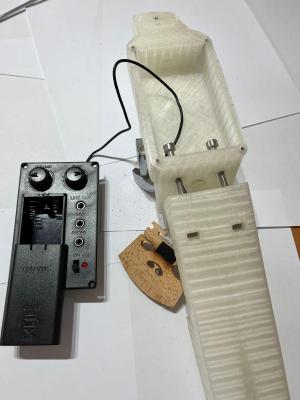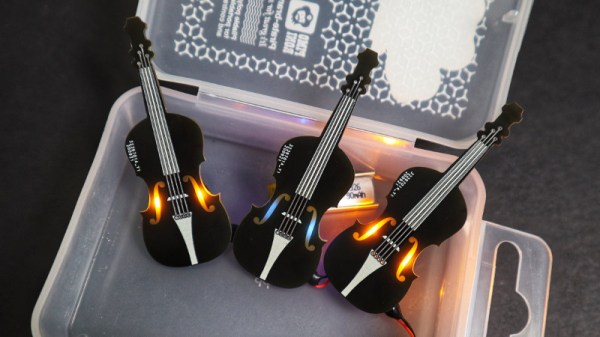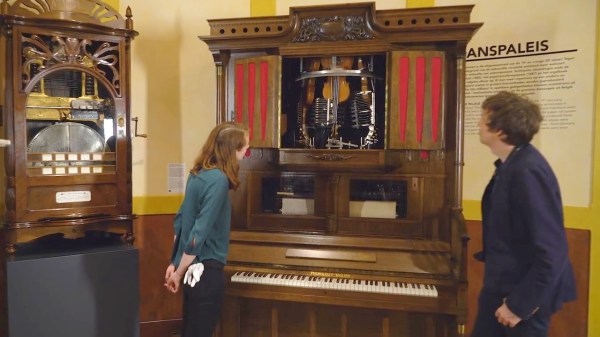We’ve always said that if we had enough money, we’d have a large room that housed every musical instrument we’ve ever been even mildly interested in. While that dream may never come to pass, it would be far more likely to happen if many of the instruments could be 3D-printed, like this electric violin.
 We really like this compact design, which mimics a headless guitar with the tuning pegs down by the bridge. [Carmensr] started with a model on Thingiverse, which uses violin strings wound around electric guitar tuners instead of wooden friction pegs. To further the guitar comparison, the three-piece neck contains a truss rod of sorts.
We really like this compact design, which mimics a headless guitar with the tuning pegs down by the bridge. [Carmensr] started with a model on Thingiverse, which uses violin strings wound around electric guitar tuners instead of wooden friction pegs. To further the guitar comparison, the three-piece neck contains a truss rod of sorts.
So how does it work, though? The magic is in the special bridge, which contains a piezo element. The bridge picks up the strings’ vibrations and sends them to a little pre-amplifier, which creates a signal that can then be used by a program like Audacity or connected directly to a speaker. Be sure to give it a listen in the video after the break.
Of course, there’s no reason not to design and print acoustic violins. It would be fun to experiment with different filaments for different sounds.
Continue reading “There Are Stradi-various Ways To Make A Violin, And This Is One”


















